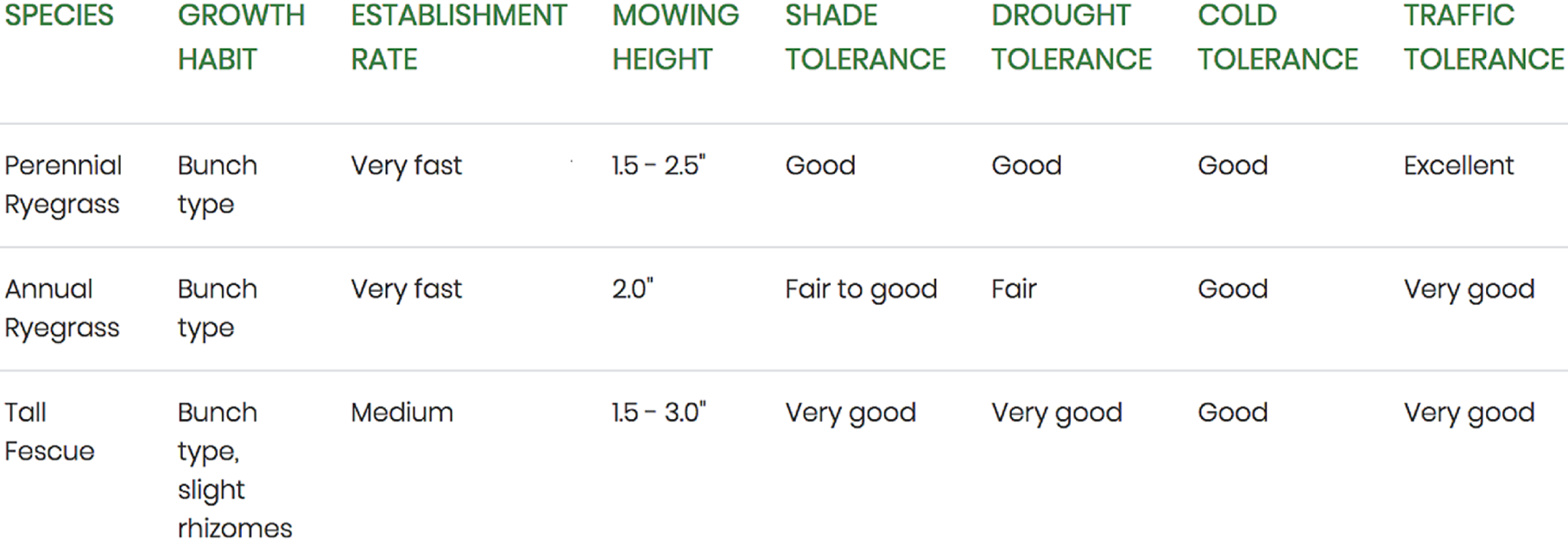Turfgrass Seed Due Diligence
You’ll likely be living with the turfgrass variety you choose for years to come; so it makes sense to do your research and choose the best varieties available.
One of the most important factors in selecting turfgrass seed for your site is to decide which species (or mix of species) best fits your climate, site use and intended maintenance level. Species selection is important whether you are deciding on an initial selection for new construction (on athletic fields, home lawns or commercial sites) or selecting seed for interseeding or renovating existing turf to add improved varieties to the turfgrass population.
Since turfgrass breeders improve their varieties every year, it’s important to do some research to find the varieties that incorporate the latest research. The cost of the seed is a small portion of the total cost of any seeding job; therefore it makes sense to choose the best seed varieties available that fit your site requirements. You’ll likely be living with the turfgrass variety you choose for years to come; so it makes sense to buy the best varieties available.
Your research is made easier by utilizing the National Turfgrass Evaluation Program (NTEP). This program establishes tests at university sites across the U.S. and Canada and publishes unbiased rankings on its website (ntep.org). You can find out which varieties of a particular species ranked highest nationally and at locations near you. Be aware, however, that the NTEP tests on a five-year rotation cycle. So ask about newly released varieties that may be available, especially if they are in the later years of the rotation for a particular species. Major improvements can be made during that time and data from research universities may be available for these new varieties.
Cool-Season Grasses
The focus of this article is on cool-season species because they are all available as seed. Warm-season species are primarily available vegetatively – as sod or stolons. Cool- season species are most widely adapted in the northern two-thirds of the United States. The middle third of the country – known as the transition zone – is an area where both warm- and cool-season species are grown. Each of the most popular cool-season species has unique characteristics, which are summarized below.
- Kentucky bluegrass is a widely adapted species that is used for many situations. Its dark green color and medium fine texture contributes to it sometimes being called the “king of lawn grasses.” Kentucky bluegrass is able to spread and recover because it grows by underground primary lateral stems called rhizomes. These rhizomes grow out from the main plant and form a new plant, allowing it to form a dense cover. Kentucky bluegrass is a good choice for athletic fields, home lawns and golf courses. For high quality turf, Kentucky bluegrass requires medium-to-high maintenance
- Perennial ryegrass has a non-spreading, bunch-type growth habit. It germinates and establishes quickly. It has a dark green color, medium-fine texture and good mowing characteristics. Perennial ryegrass may be seeded alone or in mixtures with other species.
- Tall fescue is another bunch-type grass that persists in the warmer areas of the cool season range of adaptation. Its deep root system increases its heat and drought tolerance. Plant breeders have made great improvements in this species over the last decade. The newer varieties are as dark green and almost as fine textured as the improved Kentucky bluegrass varieties. However, tall fescue does not tolerate mowing heights as low as Kentucky bluegrass or perennial ryegrass. Thus, a mowing height of 1.5 to 3 inches is recommended. Tall fescue can produce a high quality turf stand with slightly less water and fertilizer than some other species.
- Fine-leafed fescues are used primarily in mixes with other species such as Kentucky bluegrass and perennial ryegrass. Fine-leafed fescues include creeping red fescue (the most widely used variety), chewings fescue and hard fescue. All have a fine leaf texture and are particularly well adapted to dry, shady conditions as well as low maintenance situations. Both chewings fescue and hard fescue have a bunch-type growth habit; chewings fescue exhibits slow-spreading rhizomes.
Turfgrass Characteristics
The following chart compiles some of the main characteristics of cool-season species.


When choosing a turfgrass species to fit your long-term management plans, look for proven varieties that exhibit superior genetics, improved disease and insect resistance and drought tolerance.